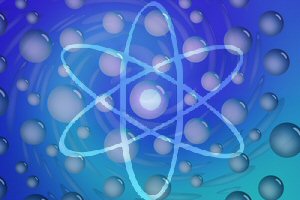ORNL Nuclear Cavitation – The Discovery Team (Part 4)

Oak Ridge Nuclear Cavitation Confirmation
July 21, 2013 – By Steven B. Krivit –
This is Part 4 of “2001 Oak Ridge Nuclear Cavitation Confirmation Uncovered.”
This is a New Energy Times Special Report. The first part of this series published on July 18, 2013.
The Discovery Team (Spring 2001)
The Taleyarkhan group began its research in 1999, sponsored by a Defense Advanced Research Projects Agency grant. The group first observed neutron signals above background in its nuclear cavitation experiment at Oak Ridge in January 2001.
In addition to Taleyarkhan, the group comprised Colin West, a physicist (a pioneer in sonoluminescence and retired from ORNL in September 2001), JaeSeon Cho, a nuclear engineer and at the time a post-doctoral researcher at ORNL (now working with FNCS Technology), Richard T. Lahey Jr., an authority in nuclear reactor safety (professor emeritus and dean of engineering, retired from Rensselaer Polytechnic Institute in September 2008), Robert I. Nigmatulin, an engineer and mathematician (director of Schirshov Institute of Oceanology), and Robert C. Block, a nuclear physicist and nuclear engineer (professor emeritus of engineering, retired from Rensselaer Polytechnic Institute in 1997).
By May 2001, after several months, they had performed about 100 runs with cavitation on and 100 with cavitation off and were confident that they had observed signals of nuclear cavitation.
“The tritium data were preliminary at the time,” Taleyarkhan wrote, “but the time-correlated sonoluminescence flashes and neutron-gamma signals were quite compelling and indicative of bubble fusion. We only saw these data during experiments with chilled deuterated acetone and cavitation and not under any of the control conditions.”
They told their management of their interest in publishing the results. According to Shapira, James Roberto, at the time the associate laboratory director of the Physics Division, asked Shapira and Saltmarsh, as an internal peer review, to check the Taleyarkhan group’s experiment.
Shapira, whose division reported to Roberto, did most of the work and report writing. Saltmarsh, a physicist, had retired in January 1999. He had been the director of the Fusion Energy Division and the fusion program, which was devoted completely to magnetic confinement fusion research. By that time, 50 years had passed since researchers around the world had attempted to make controlled thermonuclear fusion energy practical.
In response to Roberto’s request, the Physics Division (PD) made plans and agreements with the Taleyarkhan group and delivered a neutron detector (NE-213) and data acquisition system to the Taleyarkhan group’s lab in the Engineering Technology Division (ETD). Several weeks and a few false starts later, the NE-213 was working, and they got data during one afternoon.
Preparations for the experiment started in the morning on July 24, 2001, as Cho began cooling the apparatus to 0 degrees C. Around noon, Saltmarsh came to Taleyarkhan’s lab for about half an hour to check that preparations for the test were all in place.
Later that afternoon, Shapira came into the ETD lab, and while Cho, with some assistance from Taleyarkhan, operated the group’s experiment, Shapira took nuclear data with his NE-213 detector and his data acquisition system. Everything else in the configuration was part of the Taleyarkhan group’s apparatus.
Cho ran the experiment for 65 minutes with cavitation on, immediately followed by a 58-minute run with cavitation off. In addition to gathering neutron-gamma data from his detector, Shapira also took sonoluminescence data from the Taleyarkhan group’s photomultiplier detector. Shapira did not take data for normal acetone control experiments because those control experiments were not performed that day.
On July 30 and 31, Shapira and Saltmarsh wrote a pair of reports and submitted them to Roberto and Lee Riedinger, the deputy director for science and technology at ORNL. Their reports focused nearly exclusively on the matter of coincidences and glossed over the neutron singles data. Their reports mentioned nothing about tritium because Shapira did not obtain data related to tritium for the experiments performed on July 24, 2001.
Taleyarkhan Group Submits Paper to Science (Fall 2001)
Three months later, on Oct. 31, 2001, the Taleyarkhan group submitted its paper, “Evidence for Nuclear Emissions During Acoustic Cavitation,” to Science. Shapira and Saltmarsh had already been discussing the experiment — and their July reports — outside of ORNL, as West explained in an e-mail to New Energy Times.
“Shapira and Saltmarsh were telling people in the physics community that our experiment had not produced any neutrons over background,” West wrote. “We were frustrated because they had not reported their neutron singles data and we didn’t have access to the raw data they took with their detector on our experiment yet.”
In Shapira and Saltmarsh’s first internal review documents, dated July 30, 2001, and July 31, 2001, Saltmarsh and Shapira omitted anything about the neutron singles counts from the July 24, 2001, runs. The coincidence demand presented by Saltmarsh and Shapira took center stage in their thesis.
The ORNL administrators were losing confidence and were getting nervous about his group’s paper, Taleyarkhan told New Energy Times.
Michael Murray, a health physicist with the Life Sciences Division at ORNL, analyzed the group’s tritium data and confirmed the tritium data set in his Dec. 12, 2001, report “Technical Review.”
“Murray was an expert, and Oak Ridge relied on his knowledge, experience and abilities to help keep many employees demonstrably safe from potential radiological hazards,” West wrote to New Energy Times.
The tritium analysis passed internal review, but the neutronics were still unresolved. There was still a question about whether excess neutrons had been observed.
Next Part: Surprise in Shapira-Saltmarsh Raw Data

